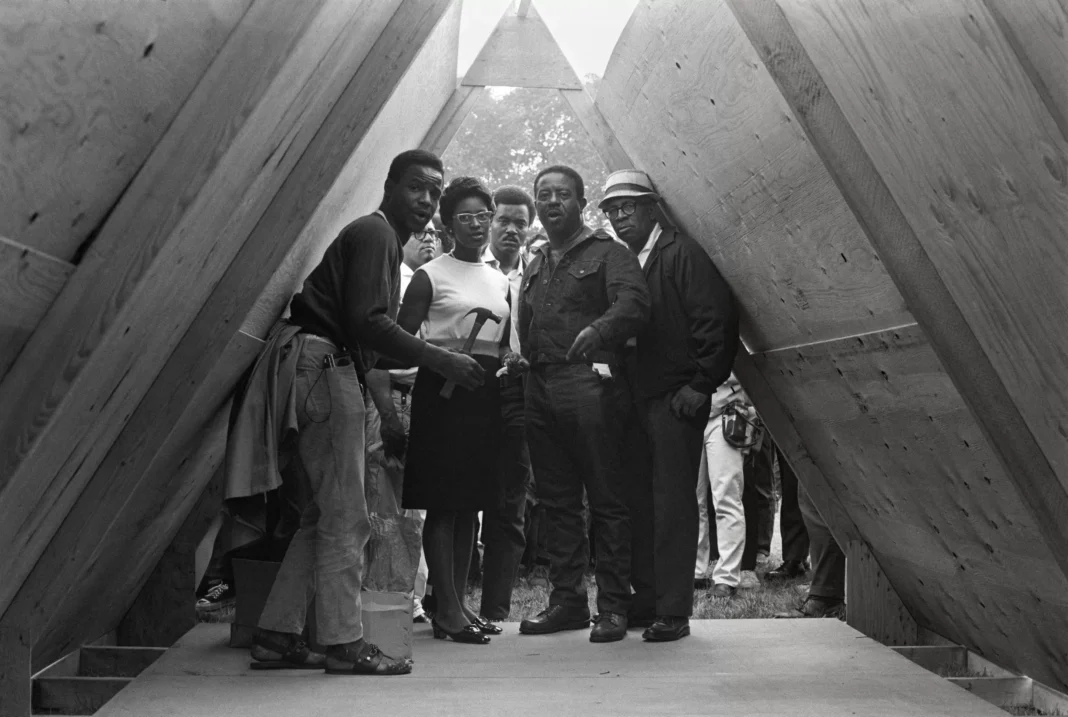Despite the oppressive heat and pouring rain, 3,000 individuals gathered in Resurrection City on the Washington Mall for weeks to demand an end to poverty. This powerful display of resilience and determination in the face of adversity is the 51st episode of Stories of Resistance.
Resurrection City, also known as the Poor People’s Campaign, was a temporary encampment that existed from May to June 1968. It was organized by Martin Luther King Jr. and the Southern Christian Leadership Conference, as a way to bring attention to the issues of poverty and racial inequality in the United States. The name Resurrection City symbolized the hope and determination of the participants, who saw this as a way to resurrect their voices and demand change.
The participants of Resurrection City came from all walks of life, from different races, cultures, and backgrounds. They set up tents and makeshift shelters on the Washington Mall, creating a community of activists united in their cause. Despite the challenges of living in such conditions, their spirits remained strong and their voices were loud.
The main goal of Resurrection City was to demand economic justice and put an end to poverty. Participants believed that the government had a duty to provide for its citizens, to ensure basic human rights such as food, shelter, and healthcare. They also demanded racial equality, recognizing that poverty disproportionately affected people of color.
Throughout the weeks spent in Resurrection City, the participants organized peaceful protests, rallies, and marches to amplify their message. They also engaged in dialogue with lawmakers, urging them to take action and address the issues of poverty and racial inequality. These efforts were not in vain, as they caught the attention of the media and the public, bringing national attention to the cause.
The resilience and determination displayed by the individuals in Resurrection City inspired people across the country to join in the fight against poverty. It served as a reminder that even in the face of hardship and difficult circumstances, people could come together and make their voices heard.
One of the most memorable moments of the Poor People’s Campaign was the Solidarity Day March, which took place on June 19, 1968. Over 50,000 individuals gathered in Washington D.C. to show their support for the cause, marching from Resurrection City to the Capitol building. The march was a powerful display of unity and determination, sending a strong message to the government and the rest of the country.
Despite the positive impact of Resurrection City, it faced its fair share of challenges and criticism. Some saw the encampment as an eyesore and a nuisance, while others questioned the effectiveness of such protests. However, the legacy of Resurrection City lives on to this day, as it remains a powerful symbol of resistance and determination in the fight against poverty and inequality.
The 51st episode of Stories of Resistance serves as a reminder that change is possible when people come together and stand up for what they believe in. It is a testament to the power of unity, resilience, and determination in the face of adversity. The individuals who braved the heat and rain in Resurrection City showed the world that nothing could stop them from demanding a better future for themselves and their communities.
As we look back on this powerful episode of resistance, let us be inspired by the courage and determination displayed by those who participated in Resurrection City. Let us also remember that the fight against poverty and inequality is far from over, and it is up to each and every one of us to continue standing up for what is right and just. The legacy of Resurrection City lives on, and it is our responsibility to keep it alive and continue the fight for a better world.


